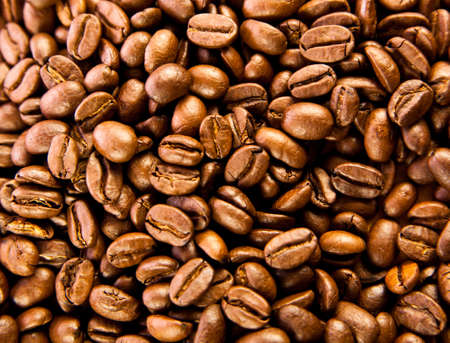1. Brewing Waste and Its Environmental Footprint
Every morning across the United States, millions of people start their day with a fresh cup of coffee. Whether it’s from a local café, a drive-thru chain, or a home brew, that daily ritual leaves behind something we don’t often think about—used coffee grounds. While they may seem harmless, the reality is that coffee waste is adding up fast and having a bigger impact on our environment than most realize.
How Much Coffee Waste Are We Talking About?
The U.S. is one of the biggest consumers of coffee in the world. With over 400 million cups consumed each day, its no surprise that tons of used coffee grounds are produced as a result. But where do all those grounds go? Unfortunately, most of them end up in landfills.
Coffee Consumption and Waste by the Numbers
| Category | Amount |
|---|---|
| Daily coffee consumption in the U.S. | 400 million cups |
| Estimated weight of used grounds per cup | ~0.3 ounces |
| Total used grounds per day (approx.) | 7.5 million pounds |
| Total used grounds per year (approx.) | 2.7 billion pounds |
| % of grounds sent to landfill | Over 90% |
Why Sending Coffee Grounds to Landfills Is a Problem
When organic materials like coffee grounds decompose in landfills without access to oxygen, they produce methane—a greenhouse gas that’s more potent than carbon dioxide. That means every scoop of wasted grounds contributes to climate change if not properly managed. Plus, were tossing away a resource that could actually help our gardens thrive.
The Methane Effect
Methane is roughly 25 times more effective at trapping heat in the atmosphere than carbon dioxide over a 100-year period. Even though it comes from natural sources like food waste, its impact on global warming is serious. With billions of pounds of coffee grounds decomposing anaerobically in landfills each year, this “invisible” waste adds up quickly.
A Missed Opportunity for Sustainability
Instead of treating used coffee grounds as trash, we can see them as a valuable resource. They’re rich in nitrogen and other nutrients that make them ideal for composting—something many people are just beginning to explore at home or through community programs. By making small changes in how we dispose of our daily brew waste, we can reduce landfill use and create something useful in return.
In the next section, we’ll dive into how composting with coffee works and why your garden will thank you for it.
2. Why Used Coffee Grounds Make Great Compost
Used coffee grounds are more than just a morning ritual leftover — they’re a hidden gem for your compost pile. When added to compost, they bring a rich mix of nutrients and physical properties that can dramatically improve soil quality. Let’s break down why these grounds are so valuable.
Nitrogen-Rich Powerhouse
Coffee grounds are considered a “green” compost material, meaning they’re high in nitrogen — one of the key ingredients microbes need to break down organic matter. Nitrogen is essential for healthy plant growth, aiding in leaf development and overall vitality. On average, used coffee grounds contain about 2% nitrogen by volume, making them an excellent supplement for balancing out “brown” materials like dried leaves and cardboard.
Compost Ingredient Comparison
| Material | Type | Main Nutrient | Estimated Nitrogen Content |
|---|---|---|---|
| Used Coffee Grounds | Green | Nitrogen (N) | ~2% |
| Dried Leaves | Brown | Carbon (C) | <1% |
| Vegetable Scraps | Green | Nitrogen (N) | ~1-2% |
| Shredded Newspaper | Brown | Carbon (C) | <1% |
Perfect Texture for Microbial Activity
The texture of used coffee grounds plays an important role in composting. Their small particle size and moisture content create ideal conditions for microbial life to thrive. These microbes are the workhorses of your compost pile, breaking down organic material into rich humus. The grounds also help retain heat, which speeds up decomposition — especially useful during colder months.
Improves Soil Structure and Health
Once broken down in compost, coffee grounds contribute to improved soil structure. They help create air pockets in the soil, enhancing drainage and aeration. This is particularly beneficial for heavy clay soils or overly compacted garden beds. Additionally, the organic matter from composted coffee grounds boosts water retention in sandy soils and promotes healthy root development.
Bonus: Natural Pest Deterrent
An added perk? Coffee grounds may deter certain pests like slugs and snails due to their abrasive texture and caffeine content. While not a guaranteed solution, it’s a nice side benefit when working towards a healthier garden ecosystem.
In short, turning your used coffee grounds into compost is an easy win for both your garden and the environment. With their nutrient-rich profile and soil-enhancing properties, they’re a small change that leads to big results.

3. How to Compost Coffee Grounds at Home
If youre a coffee lover in the U.S., chances are you brew a cup (or three) daily. Instead of tossing those used coffee grounds in the trash, why not turn them into garden gold? Composting coffee grounds at home is easier than you might think, and it’s a great way to reduce landfill waste while enriching your soil.
What Makes Coffee Grounds Great for Compost?
Coffee grounds are rich in nitrogen, making them an excellent “green” material for compost. They help activate your compost pile and speed up decomposition when balanced with “brown” materials like dried leaves or cardboard.
How Much Coffee Grounds Should You Use?
While coffee grounds are beneficial, too much of a good thing can cause problems. A good rule of thumb is to keep coffee grounds to about 20% of your total compost volume. This helps maintain the right carbon-to-nitrogen ratio and prevents issues like mold or odor.
Coffee Ground Compost Ratio Guide
| Material | Type | Suggested Ratio |
|---|---|---|
| Used Coffee Grounds | Green (Nitrogen-rich) | Up to 20% |
| Dried Leaves / Shredded Paper | Brown (Carbon-rich) | 40-60% |
| Fruit & Veggie Scraps | Green (Nitrogen-rich) | 20-30% |
| Yard Waste (like grass clippings) | Varies | Balance as needed |
What to Mix with Coffee Grounds?
- Dried leaves, straw, or shredded paper (to balance moisture and acidity)
- Food scraps like fruit peels and veggie trimmings
- Small amounts of garden soil or finished compost to introduce microbes
Do’s and Don’ts When Composting Coffee Grounds
Do’s:
- Do mix coffee grounds with browns: This prevents clumping and promotes airflow.
- Do use paper filters: Most paper filters are compostable and can be tossed in with the grounds.
- Do monitor moisture: Coffee grounds hold water well, so balance them with dry materials.
Don’ts:
- Don’t use too many coffee grounds: Excess nitrogen can throw off the compost balance.
- Don’t add flavored or sweetened coffee waste: Sugar and dairy can attract pests.
- Don’t dump grounds in large piles: Spread them out to avoid compacting and odor issues.
Troubleshooting Common Issues
If your compost pile starts smelling sour or looks slimy, you may have added too many wet greens like coffee grounds. Just add more browns—think cardboard, leaves, or sawdust—to soak up excess moisture and rebalance the pile.
Your Morning Brew Can Feed Your Garden!
A simple change in your daily routine—saving your used coffee grounds—can make a big difference. With just a few tips and tricks, American households can easily integrate this eco-friendly habit into everyday life.
4. Community Gardens and Urban Composting Initiatives
Across the United States, more and more neighborhoods are turning coffee waste into a valuable resource through local composting projects and community gardens. These grassroots efforts not only keep organic waste out of landfills but also help build stronger, greener communities.
How Coffee Grounds Fit In
Coffee grounds are rich in nitrogen, making them a great addition to compost piles. When mixed with “brown” materials like dry leaves or cardboard, they help speed up decomposition and create nutrient-rich compost thats perfect for growing fruits, vegetables, and flowers in urban spaces.
Success Stories from U.S. Cities
Here are some inspiring examples of how cities across the country are repurposing used coffee grounds:
| City | Program | Key Features |
|---|---|---|
| Portland, OR | Grounds for Gardens | Collects used coffee grounds from local cafes to supply community gardens with compost material. |
| San Francisco, CA | Cafe-to-Compost Program | City partners with small businesses to divert coffee waste into citywide composting systems. |
| Austin, TX | Local Loop Compost | A grassroots initiative that picks up used grounds from independent coffee shops and delivers them to urban farms. |
| Burlington, VT | Sustainable Gardening Co-Op | Encourages residents to bring their own grounds to shared garden plots as part of a zero-waste mission. |
The Role of Coffee Shops and Volunteers
Many of these initiatives wouldnt be possible without the support of local coffee shops and volunteers. Cafes set aside their daily coffee waste instead of tossing it in the trash, while community members pick it up and transport it to gardens or compost hubs. It’s a simple system that creates big results.
Want to Get Involved?
If youre interested in helping your neighborhood reduce waste and grow fresh food using coffee grounds, consider these steps:
- Ask your local café if they’re willing to save their used grounds for pickup.
- Join or start a community garden near you that accepts compost donations.
- Connect with urban farming nonprofits in your area—they often need volunteers and materials.
Coffee Waste: A Local Solution for a Global Problem
The movement is growing, one cup at a time. By turning yesterdays coffee into tomorrow’s soil, communities are proving that sustainable change starts right at home—and sometimes in your favorite mug.
5. Reducing Landfill Waste One Cup at a Time
Every time you brew a cup of coffee, you’re left with used coffee grounds — and while it may be tempting to toss them in the trash, there’s a better way. Coffee grounds are rich in organic material and can be transformed into valuable compost instead of ending up in landfills. In fact, making small changes at home can have a big environmental impact.
Why Coffee Grounds Don’t Belong in the Trash
When organic waste like coffee grounds is sent to landfills, it breaks down without oxygen, producing methane — a greenhouse gas far more potent than carbon dioxide. But when composted properly, those same grounds help create nutrient-rich soil that supports local gardens and reduces the need for chemical fertilizers.
Simple Ways to Make a Difference
You don’t have to overhaul your lifestyle to start reducing landfill waste. Here are some easy ways to keep coffee grounds out of the garbage:
| Method | How It Helps |
|---|---|
| Compost at Home | Add used coffee grounds to your compost bin or pile along with kitchen scraps and yard waste. They provide nitrogen, which helps balance the carbon-rich materials like dry leaves. |
| Connect with Local Compost Services | Many cities offer curbside compost pickup or drop-off locations. Check with your municipality or local farmers markets for options. |
| Donate to Community Gardens | Reach out to schools, community gardens, or urban farms — many gladly accept used coffee grounds for their composting needs. |
Your Daily Brew Can Fuel Something Bigger
If you’re already enjoying coffee every day, you’re halfway there! By simply collecting your used grounds in a container and choosing one of the options above, youre helping reduce landfill waste and support sustainable gardening efforts in your area.
Pro Tip:
If youre not ready to compost yourself, save your grounds in an airtight container and freeze them until you can donate or drop them off at a local site.


